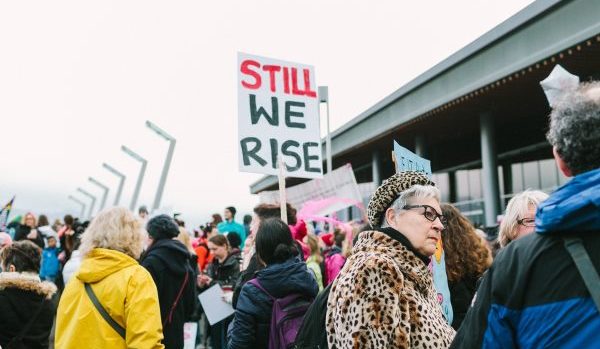Colorado Continues History of Fighting for its Women

Yvonne Wright is an Emmy-award-winning journalist who is a connoisseur…
This month, women across the country will celebrate the 97th anniversary of receiving the right to vote. While it’s an important date in women’s history, here in Colorado, it really wasn’t that big of a deal.
By the time the country got around to ratifying the vote nationwide, women in Colorado had already been voting for 27 years. Colorado became the first state to elect women to its legislature one year after becoming the first state to grant women the right to vote through a popular election.
This leadership continues today.
“In Colorado, women are better represented in our general assembly than in nearly all other states,” said Louise Myrland, Vice President of Programs for the Women’s Foundation of Colorado. Colorado ranks third in the nation for women’s representation, with women holding 39 percent of state House and Senate seats.
At the same time, women’s rights activists across the country warn that the nation is on a precipice.
President Trump ran on a platform that threatened women’s reproductive rights on several fronts. One day after his inauguration, women staged the largest single-day protest in U.S. history. They were not just protesting what Trump promised politically, but also statements he had made that many women found offensive, like bragging about grabbing women’s genitals or walking into the dressing rooms at beauty pageants his company helped fund.
Long-time women’s rights activist Gloria Steinem told the crowd gathered in the nation’s capital, “This is an outpouring of energy and true democracy like I have never seen in my very long life. It is wide in age. It is deep in diversity.”
Coming from a woman who attended the Dr. Martin Luther King, Jr.-led March on Washington and who herself would later organize migrant and women right’s rallies across the nation, that is significant.
Now, seven months into the administration, the president is working to make good on his promises.
He appointed a Supreme Court justice who has voted against requiring insurance companies to pay for birth control. If abortion rights are challenged, based on some of his earlier rulings, he is expected to vote against them. Trump is also pushing for legislation to ban late-term abortions, slash maternity leave, and cut funding for Planned Parenthood and other clinics that offer abortion. He has also signed executive orders that cut funds to world-wide family-planning organizations.
Some women’s activists, like conservative-leaning author and philosopher Christina Hoff Sommers, do not necessarily see the president’s actions regarding abortion as threatening women’s rights.
“Americans are pretty evenly divided on [abortion]. With women, half want a liberal policy and half are pro-life,” Sommers told the Conservative Women’s Network. Sommers believes there are other, less controversial issues that women can agree on. Sommers herself believes in a woman’s right to choose, and also opposes government funding for abortion.
The National Organization for Women (NOW) is urgently working against cuts to contraceptives. The group’s website reported that 99 percent of all women and 98 percent of Catholic women use contraceptives at some point during their childbearing years.
NOW’s work is in response to 100 lawsuits working their way through the nation’s court systems that the organization says threaten women’s rights. NOW calls them “The Dirty 100”, lawsuits that primarily try to stop requiring insurance companies to pay for contraception.
While Colorado would be impacted by any federal ruling, this year, the state legislature voted to maintain funding for contraception programs that Myrland said “have had tremendous success in reducing unintended pregnancy by improving access to long-active, reversible contraception.”
Other state legislative successes include laws to combat pregnancy discrimination, expand a pilot program to support welfare mothers in getting jobs without losing supportive benefits, and the defeat of a bill in the Colorado Senate that would have eliminated access to safe and legal abortion. Lawmakers also voted to extend income tax credits for child care and passed a law that allows employees to compare wages, which is especially important to help close the pay gap between men and women.
“Women earn, on average, 80 cents on the dollar compared to men, and the gender wage gap is even wider for women of color… In Colorado, women are more likely than men to live in poverty. Women are also overrepresented in the minimum wage workforce and underrepresented in high earning fields,” said Myrland.
Those high earning fields are in science, technology, engineering and mathematics (STEM). Right now, women in this country fill about one-quarter of all STEM jobs. Many high schools and colleges are pushing to get women into those careers.
Currently, women make up about half of the majors in science, math, and statistics, but are hovering around 20 percent for degrees in engineering and computer science, according to National Center for Education statistics.
In Colorado, women with lower incomes can be hit particularly hard.
“Colorado consistently ranks among the least affordable states for child care and only has capacity to serve 23 percent of children in licensed child care providers,” said Myrland. She also pointed out that women of color and women in rural areas face greater economic challenges.
Equal pay for equal work and getting women into high paying careers top the agenda of many women’s rights groups nationwide.
Staying true to Colorado’s progressive past on women’s rights issues, the state is narrowing in on these topics, even while these issues are becoming more divided along party lines nationwide.
For the first time in several years, The Women’s Lobby of Colorado’s Annual Legislative Scorecard included two republicans with 100 percent scores on voting for women’s rights legislation.
According to the report, bi-partisan agreement resulted in the passage of bills to provide sexual assault and domestic violence survivors important rights. Since democrats control the House and republicans control the Senate in Colorado, nothing gets passed without ultimately having bipartisan support.
As the nation prepares to celebrate the anniversary of women getting the right to vote, Colorado women continue to lead the way.
While U.S. Census figures show slightly more men living in Colorado than women, nearly 52 percent of all voters in last year’s election were women. And data from the Secretary of State’s office shows that as of August, 2017, women made up nearly 52 percent of active, registered voters.
What are women voting for? Myrland said her group has an idea.
“When we asked about priorities for advancing women’s economic security and gaps in resources, we heard that women need better opportunities to pursue education at every level… For educational attainment to translate into employment and better earnings, women also need to be able to access affordable, high quality child care and earn equitable, livable wages.”
What's Your Reaction?
Yvonne Wright is an Emmy-award-winning journalist who is a connoisseur of great literature and mediocre TV.










